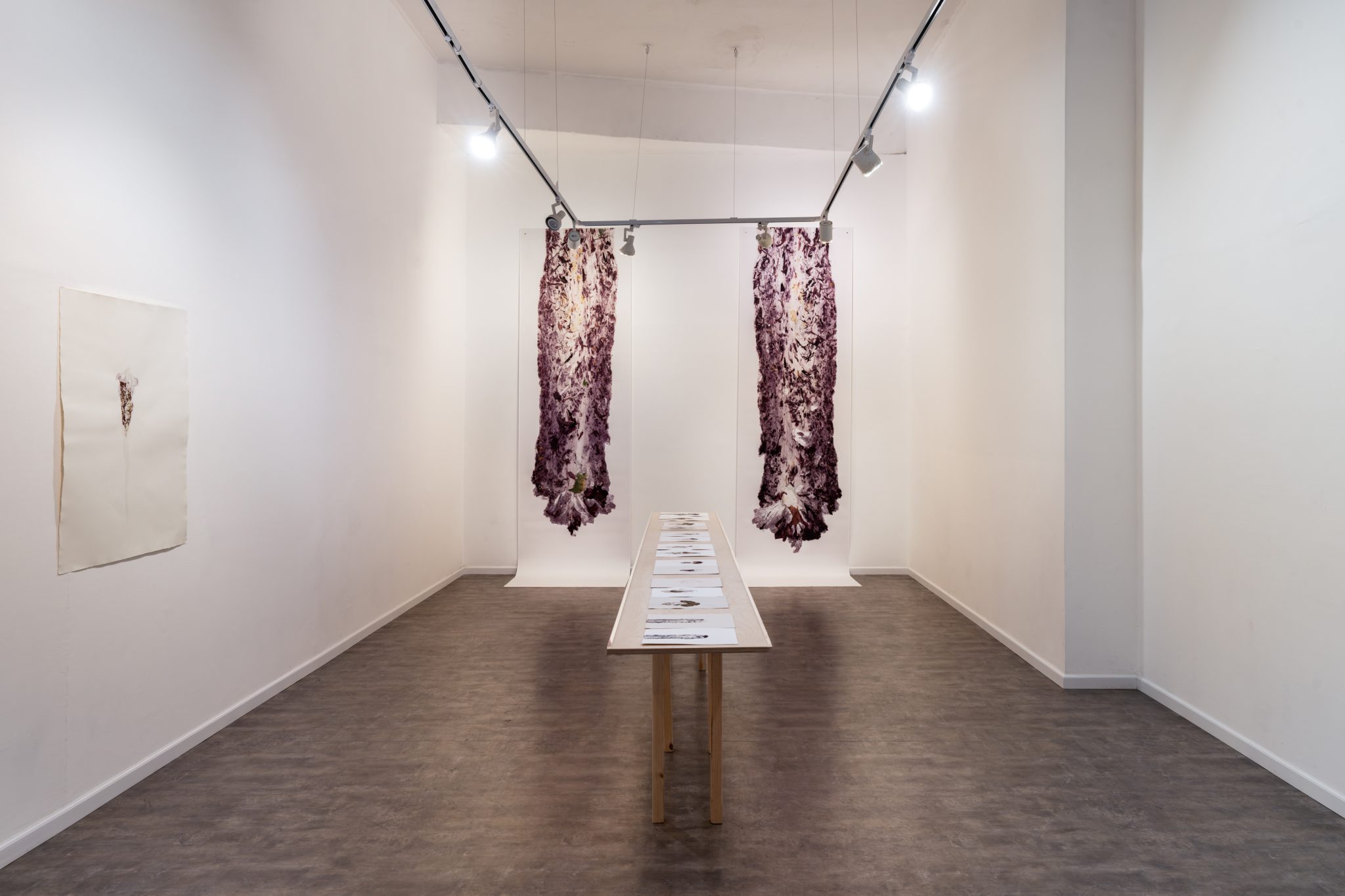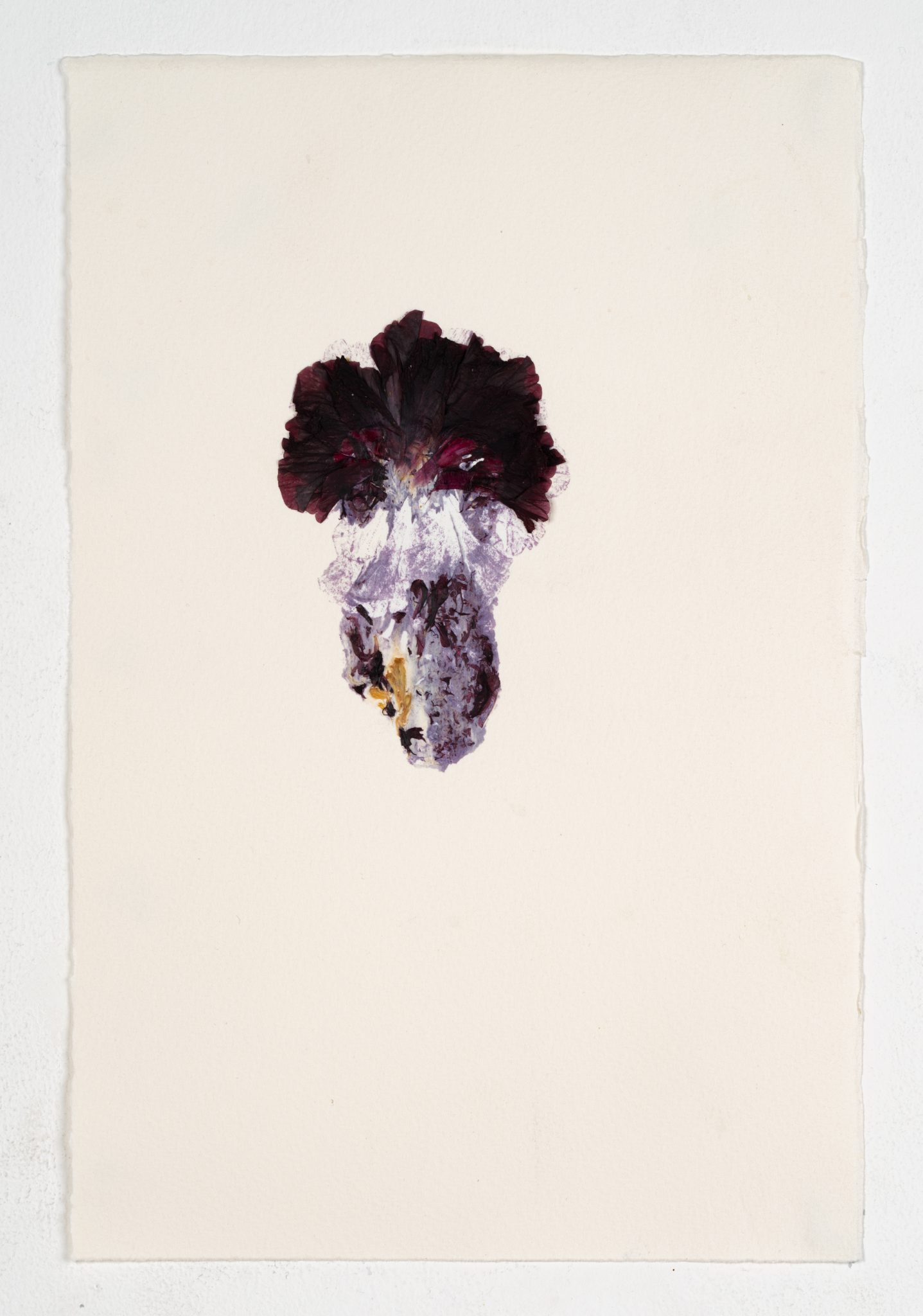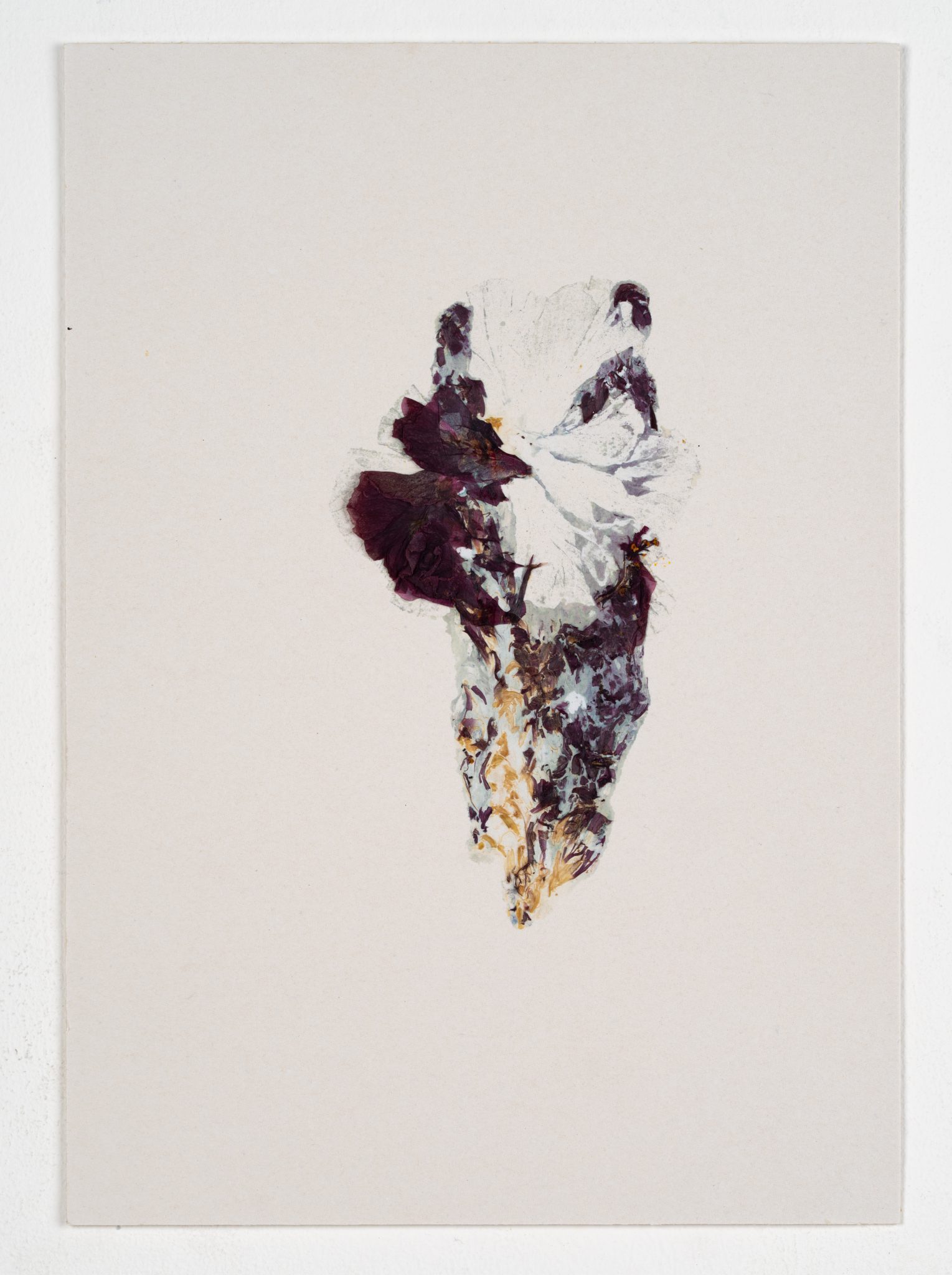Tincture
P8 Gallery / Curator Ayelet Hashahar Cohen
The project was presented as a solo exhibition on February 2024, while I am still trying to comprehend what happened on October 7th 2023 and Israel is in an ongoing war.
From the exhibition catalogue: “In July 2023, during one of the national days of disruption organized by the resistance groups against the judicial reform, Ronit Mirsky collected red hibiscus flowers growing in the yards of houses in Tel Aviv—flowers that her father had brewed for years, and whose scent reminded her of home. She gathered the flowers, their red color prominent in her life during those months as a regular participant in the Women’s March, near her home. Later, she pressed them under the cylinder of a mechanical press for prints and engravings. Her deep feelings about the trampling of civil rights were brought to the press, and she slowly and continuously crushed the hibiscus flowers in it, as a sort of energetic extension of body and soul.
Mirsky had another body of work that she developed and intended to present, but after October 7, she realized that the red flowers she had collected were more than a metaphor for a bleeding soul. The violent act of crushing the flower in the press became present in reality and turned relevant and necessary for her as both an artistic and political action.
The exhibition at P8 Gallery presented printed papers from the press: pairs of monoprints of hibiscus flowers, reminiscent of Rorschach stains and constantly changing. The space also features enlarged digital prints, translating the organic material of the flowers into pixels, allowing a view into the particles of the flower, freezing and immortalizing it in time.
The hibiscus plant is widely used in natural medicine to treat body systems. The tincture, one of the methods for concentrated plant extraction, extracts active ingredients through decomposition, cutting, crushing, and soaking in liquid. Alongside the decomposition of the flower through the press and the disintegration of the organic material, Mirsky’s works, like her previous works, also consider preservation, repair, and healing”.
Click Here for a review by Dori Ben-Alon published in Erev Rav magazine
Click Here for an interview on Portfolio magazine
































